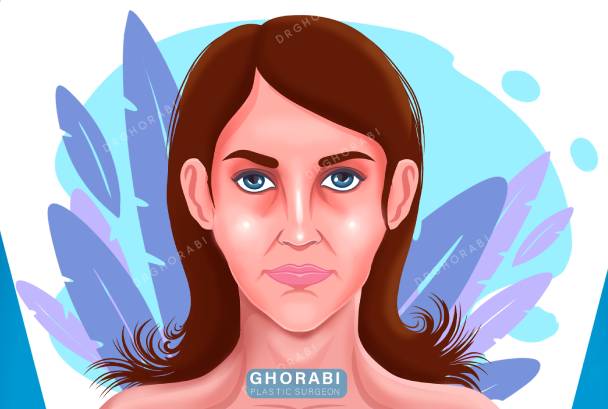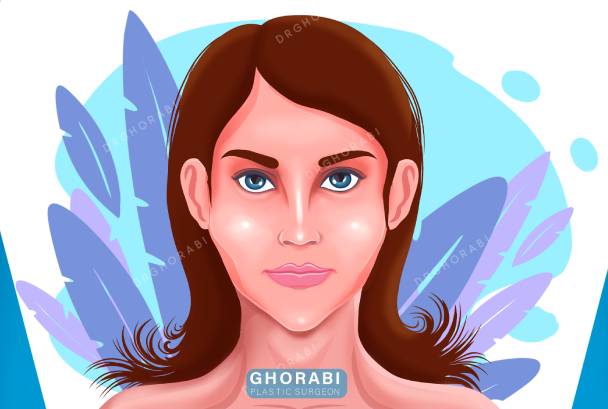The main goal of facial fat transfer is to improve facial contour, eliminate wrinkles, and create a more youthful appearance. The best age for this procedure is usually between 35 and 55 years old, when the first signs of aging have appeared. The results of this procedure are long-lasting, gradually and naturally giving the face a younger appearance.
Facial fat transfer is a new method of facial rejuvenation that uses autologous fat to restore lost volume in various areas of the face. In this process, fat is harvested from various areas of the body, such as the abdomen or thighs, through special liposuction cannulas called Tulips, and after purification using a special centrifuge, it is injected into areas such as the cheeks, temples, under the eyes, and laugh lines.
Applications of facial fat injection
Facial fat grafting has a wide range of applications in facial rejuvenation and improvement. It is very effective in restoring lost volume in areas such as the cheeks, temples, under the eyes, and laugh lines; it also helps to plump up the lips, reduce deep wrinkles, improve skin texture and tone, and repair scars, including acne scars.
Additionally, it is used in cases such as hemifacial atrophy and to correct the overall shape of the face, including highlighting the cheeks and chin. In short, fat injection is an effective method for restoring youthfulness and vitality to the face.
Areas for fat injection on the face
Full-face fat transfer is a versatile procedure that can improve the appearance of different areas of the face. Each area of the face is treated differently by a plastic surgeon with fat transfer, resulting in unique results. Here are some common areas of the face where fat is injected and the expected results for each area:
- Cheeks: Volume and highlight the cheeks, creating a younger and more youthful appearance with more defined cheek lines.
- Temples: Fill the hollows of the temples, eliminate the bony appearance and balance the face shape and eliminate hollowness.
- Under the eyes: Eliminate hollows and darkness under the eyes, reduce the tired appearance and increase the freshness and brightness of the face.
- Laugh lines (nasolabial): Fill deep laugh lines, reduce the depth and fade these lines for rejuvenation.
- Marionette lines: Improve the lines of the corners of the lips down, reduce the drooping and sad appearance of the face and increase freshness.
- Chin and jaw angle: Shape and angle the chin and jaw, creating a more well-groomed, defined and attractive face.
- Lips: Increase the volume and shape of the lips, creating fuller, more voluminous, well-shaped and more attractive lips.
- Forehead: Eliminates forehead wrinkles, smoothes and softens forehead skin, and reduces horizontal lines.
Fat injection into each of these areas is performed with a specific purpose and significantly improves the overall appearance of the face and restores youth and vitality to the face.
Types of fat injection techniques
A variety of fat transfer techniques are used in facial aesthetics to rejuvenate and improve appearance. The selection of the appropriate technique depends on the area being treated, the amount of volume needed, and the opinion of the specialist. Below, we will mention some of the most common fat transfer techniques, and we remind you that each of these methods will be examined in detail in the following sections of the content:
- Microfat Injection Technique
- Nanofat Injection Technique
- Stromal Vascular Fraction (SVF) Injection Technique
- Cannula Fat Injection Technique
- Layered Fat Injection Technique
The above techniques each have specific characteristics and applications and are used individually or in combination in facial surgery to achieve desired results.
Types of fat injection methods for the face
Steps for fat injection into the face
Facial fat transfer is a multi-step process that is performed with care and delicacy to achieve natural, long-lasting results for facial rejuvenation. These steps, from initial preparation to post-operative care, all play a role in achieving the desired result. Below, we outline the main steps of this procedure, which are sometimes combined with other rejuvenation procedures such as blepharoplasty to achieve more comprehensive results:
Care after fat injection into the face
Aftercare after facial fat injection plays a key role in achieving the best results and reducing possible complications. Following these instructions carefully will help the injected fat last longer and speed up the healing process. Just like aftercare after a brow lift, which is essential to maintain the results of the surgery, these aftercare are also very important for fat injection. Below, we will mention the most important aftercare tips for facial fat injection:
- The use of cold compresses is prohibited due to the apoptosis effect of cold on fat cells.
- Avoid manipulating, massaging, or pressing the injected areas of the face.
- Keep your head elevated when resting and sleeping to reduce swelling.
- Take medications prescribed by your doctor, including painkillers and antibiotics.
- Avoid strenuous exercise and direct heat (sauna, hot bath).
- Protect your skin from direct sunlight by using sunscreen.
- Eat a healthy diet and drink enough water to speed up your recovery.
Post-fat injection care is essential to achieving optimal and lasting facial results. By paying attention to these tips, you will have a smooth recovery period.
How long does fat injection last for?
The duration of fat injections is usually long-term, but not permanent. A significant portion of the injected fat, about 20 to 50 percent, is absorbed by the body in the first few months. The remaining fat, which is then incorporated into the surrounding tissues, lasts for years. Factors such as the injection technique, the individual’s metabolism, and the injection area affect the duration. To maintain the results, touch-ups or re-injections may be required after a few years.
Unsuitable candidates for fat injection
Facial fat transfer is not suitable for everyone. Some individual conditions and characteristics may make this procedure unsuitable for some people or increase the risk of complications. It is essential to understand these issues in order to make an informed choice and maintain your health. The following are unsuitable candidates for fat transfer:
- People with a lack of fat tissue and severe weight loss.
- Professional athletes with very low body fat percentage.
- Patients with blood clotting disorders such as hemophilia.
- People with fat metabolism problems.
- Patients with active or acute infections.
- People with autoimmune diseases.
- Severe and uncontrolled cardiovascular patients.
- People with a history of pulmonary embolism or deep vein thrombosis.
- Patients with HIV and active hepatitis B.
- People under 18 years of age and pregnant or breastfeeding women.
- People with known severe sensitivity or allergy.
- People with active skin diseases in the injection area.
Keep in mind that these are only general guidelines and the final diagnosis of fat grafting is the responsibility of a medical professional. Consulting with a physician is the best way to assess your individual circumstances and make an informed decision.
Performing facial fat injection services at Dr. Gharabi's office
Facial fat injection is the key to restoring youthfulness and vitality to your face, but this journey will require the companionship of a knowledgeable and experienced specialist. Dr. Ghorabi, a cosmetic surgeon, uses his specialized knowledge and valuable experience in the field of cosmetic surgeries to perform facial fat injection services with the highest standards of safety and quality in his well-equipped office. Receiving a professional consultation before proceeding is an important and unforgettable step to ensure that you choose the best method and achieve the desired results. Experience natural and lasting beauty by trusting Dr. Gharabi’s expertise. Call now to book a consultation and take the first step towards a younger and more youthful face.
Visitor Comments
About DR. Ghorabi
Get to know/Meet Dr. Ghorabi.
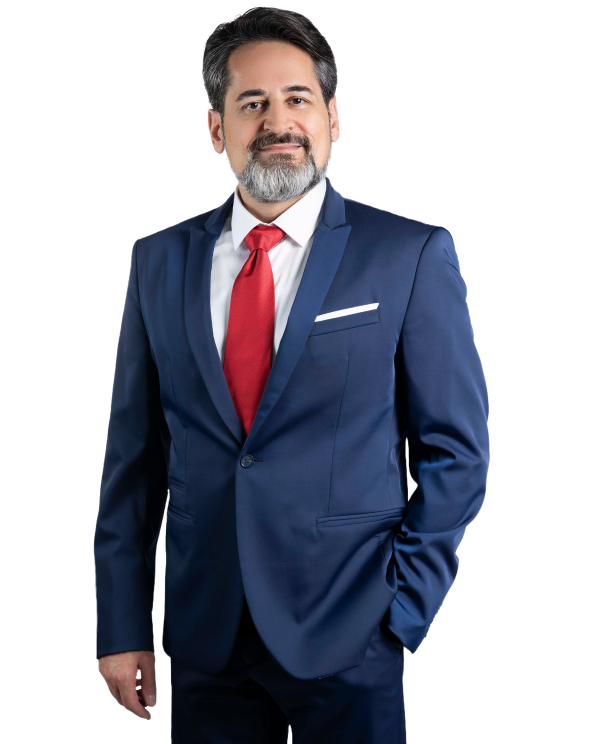
About DR. Ghorabi
Get to know/Meet Dr. Ghorabi.
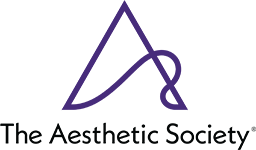
Fellow of the American Academy of Facial Plastic and Reconstructive Surgery (AAFPRS) or a similar organization such as the American Society of Plastic Surgeons (ASPS).

Official member of the International Society of Plastic and Aesthetic Surgeons
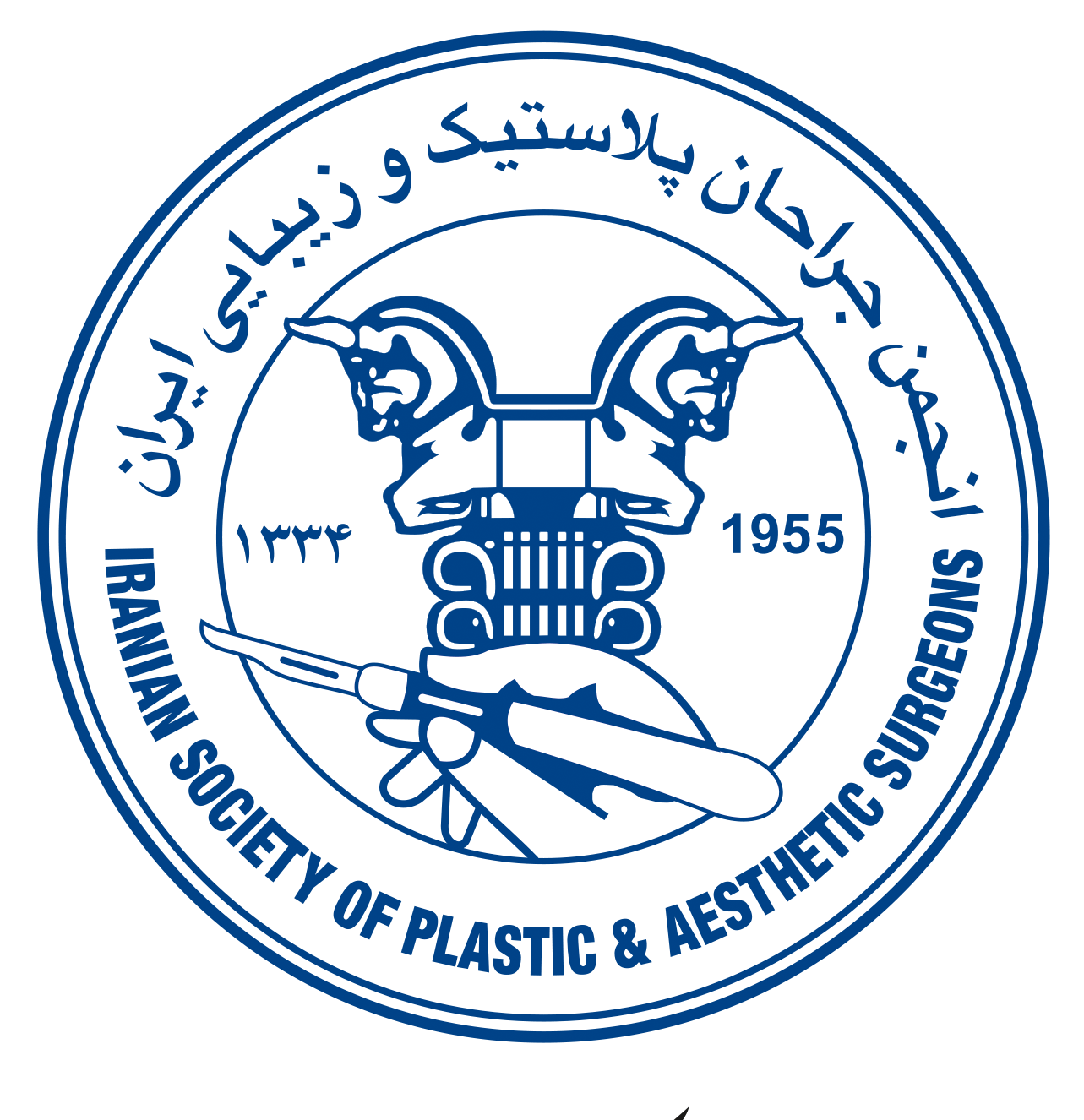
Official member of the Iranian Association of Plastic and Reconstructive Surgeons
FAQs
How long do the results of facial fat injection last?
Results usually last years; some of the fat may be absorbed and require re-injection.
Who are good candidates for facial fat injections?
People with reduced facial volume, deep wrinkles, or a desire to improve facial symmetry; consulting a doctor is recommended.
How long does the recovery period last after facial fat injection?
It usually takes between 2 and 3 weeks; during this time, swelling and bruising will decrease.
Does fat injection have any side effects?
Complications may include bruising, swelling, and in rare cases, infection; these complications are usually temporary, but by choosing an experienced doctor and following post-operative care, these complications can be minimized.
Is there a need to repeat facial fat injections?
Due to the absorption of some of the injected fat in the early months, additional sessions may be required to achieve desired results.
What does post-face fat injection care include?
Avoiding pressure or massaging the injected areas, avoiding strenuous activities, keeping your head elevated when resting, and protecting your skin from direct sunlight are some of the post-face fat injection care tips.
Is fat injection painful?
This procedure is performed under local anesthesia or general anesthesia and is painless. After the procedure, there may be some discomfort or swelling, which can be controlled with prescribed painkillers.
How much does facial fat injection cost?
The cost of this procedure varies depending on factors such as the doctor’s experience, the location of the clinic, and the size of the areas being treated. For more detailed information, call 02122040382.
